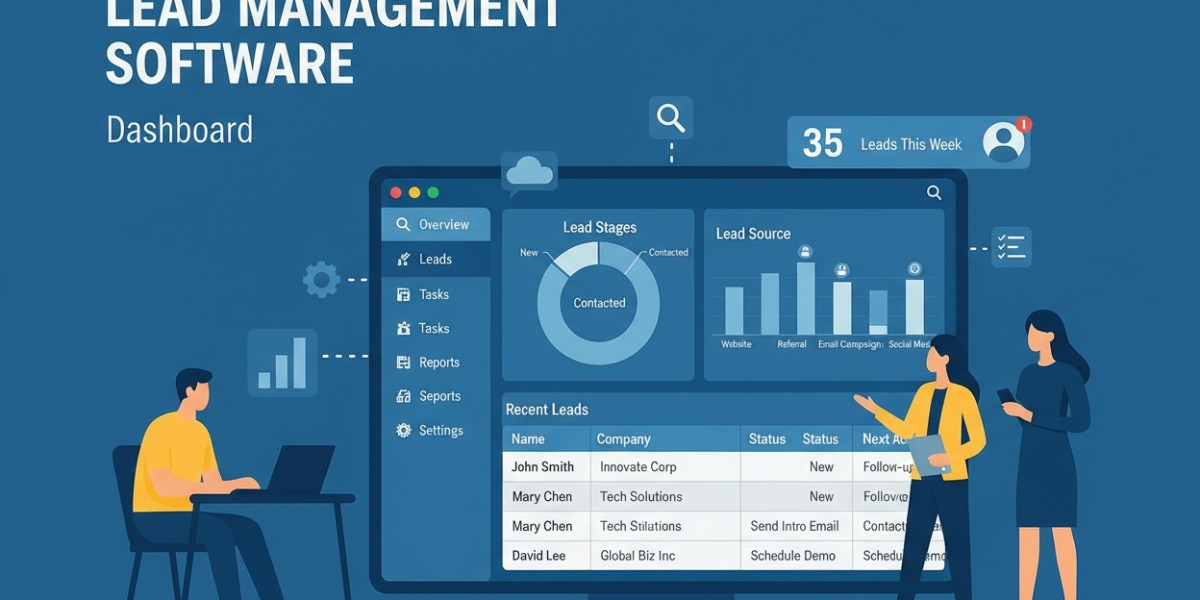In today’s fast-paced digital world, businesses generate leads from countless sources — websites, social media, ads, and email campaigns. However, capturing leads is only half the battle; managing them efficiently is where most companies struggle. Without a structured process, valuable opportunities are lost, response times slow down, and conversions suffer.
This is where lead management software becomes an essential tool. It allows businesses to capture, nurture, and convert leads seamlessly while improving collaboration between marketing and sales teams. When implemented correctly, it transforms chaos into clarity — giving you full control over your sales pipeline.
Companies like HatchTechs have developed advanced solutions such as their Sales Hub, a powerful lead management platform designed to simplify workflows, boost productivity, and drive measurable growth.
In this guide, we’ll explore how to use lead management software effectively to enhance your sales efficiency and improve overall business performance.
Step 1: Capture Leads Automatically from Multiple Channels
The first step in using lead management software is setting up automated lead capture. Leads can come from various platforms — your website, online ads, social media, or email campaigns. Instead of manually entering details into spreadsheets, modern tools automatically collect and organize lead data into a centralized system.
HatchTechs’ Sales Hub integrates seamlessly with websites, forms, chatbots, and landing pages, ensuring no potential lead is ever missed. This real-time synchronization saves hours of manual work and ensures your team responds faster to inquiries.
Tip: Connect all major lead sources (e.g., web forms, LinkedIn ads, CRM) to your software to ensure consistent data flow and prevent information gaps.
Step 2: Organize and Categorize Leads
Once leads are captured, organization is key. Effective lead management software allows you to segment and categorize leads based on demographics, source, behavior, or interest level.
This categorization helps sales teams prioritize high-value leads while nurturing others over time. For example, a lead who downloaded a pricing brochure can be marked as “hot,” while someone who only subscribed to your newsletter may be “warm.”
With HatchTechs’ Sales Hub, businesses can create automated rules that assign leads to the right salesperson or department instantly, eliminating confusion and delays.
Tip: Use clear tagging and segmentation criteria that align with your sales funnel stages — awareness, interest, consideration, and decision.
Step 3: Use Lead Scoring to Prioritize Prospects
Not all leads are ready to buy immediately. That’s why lead scoring is one of the most valuable features of lead management software.
By assigning points based on user actions (like email clicks, downloads, or site visits), your team can identify which prospects are most likely to convert.
HatchTechs’ AI-driven lead scoring system automatically ranks leads according to engagement level, allowing your sales reps to focus their time on the most promising opportunities.
Tip: Continuously refine your lead scoring criteria using historical conversion data — this will make your sales process smarter and more accurate over time.
Step 4: Automate Follow-Ups and Nurturing Campaigns
Timely communication is critical in converting leads. According to research, businesses that respond to leads within an hour are seven times more likely to convert them.
With lead management software, you can automate follow-up emails, reminders, and tasks based on lead behavior. For example, if a lead opens a product brochure but doesn’t respond, an automated email can be triggered offering a free demo or consultation.
HatchTechs’ Sales Hub enables personalized automation — ensuring every lead receives relevant and timely communication without manual intervention.
Tip: Personalize automated emails by including lead names, previous interactions, and relevant offers to improve engagement rates.
Step 5: Track Every Interaction
Effective lead management relies on visibility. You need to know how leads are engaging with your brand at every stage of the buyer journey.
A good lead management system tracks emails opened, calls made, website visits, and form submissions — creating a complete activity timeline for each contact.
With HatchTechs’ Sales Hub, all this data is stored in a single dashboard, helping sales teams make informed decisions and tailor their pitches based on real engagement insights.
Tip: Regularly review lead timelines to identify drop-off points and optimize your communication strategy.
Step 6: Integrate with Your CRM and Marketing Tools
To maximize efficiency, your lead management software should integrate with your CRM, email marketing tools, and analytics platforms.
Integration eliminates data silos and ensures that sales and marketing teams work from the same source of truth. It also enables better tracking of campaign performance and lead progress.
HatchTechs’ Sales Hub connects effortlessly with existing business tools — providing a unified ecosystem that enhances collaboration, reduces manual input, and ensures data consistency across all platforms.
Tip: Before integrating, audit your current tools and remove outdated or duplicate systems to maintain clean data flow.
Step 7: Analyze Performance and Optimize
One of the biggest advantages of lead management software is access to data-driven insights. Detailed analytics allow you to monitor key performance indicators (KPIs) such as lead source effectiveness, conversion rates, and sales cycle duration.
HatchTechs provides real-time reporting dashboards that visualize performance trends, helping managers make informed strategic decisions.
By analyzing reports regularly, you can identify which campaigns are driving the most qualified leads and which need improvement — allowing for continuous optimization.
Tip: Set up weekly performance reviews and use data insights to adjust your lead nurturing strategies and outreach frequency.
Step 8: Train Your Team for Maximum Efficiency
Even the most advanced software is only as effective as the people using it. Regular training sessions ensure your sales and marketing teams understand how to use the platform, interpret analytics, and take action quickly.
HatchTechs offers onboarding and support to help teams get the most out of their Sales Hub. By establishing clear workflows and responsibilities, you create a system that runs smoothly and delivers consistent results.
Tip: Create internal guides or video tutorials to reinforce team learning and ensure uniform adoption of the software.
Benefits of Using Lead Management Software
When implemented correctly, lead management software can transform how your business operates. The key benefits include:
Higher Conversion Rates: Prioritized leads and timely follow-ups mean more deals closed.
Improved Team Productivity: Automation reduces manual tasks and administrative workload.
Better Customer Experience: Personalized communication nurtures trust and long-term relationships.
Accurate Forecasting: Data insights improve planning and resource allocation.
Stronger Sales-Marketing Alignment: A shared system encourages collaboration and accountability.
HatchTechs’ Sales Hub combines all these advantages into a single platform — giving businesses a comprehensive solution to manage leads efficiently from start to finish.
Why Choose HatchTechs
HatchTechs stands out for its commitment to innovation, scalability, and customer success. As a leading technology company in the UK, HatchTechs designs digital solutions that empower businesses to grow smarter.
The Sales Hub is more than just software — it’s a complete ecosystem for sales optimization. With features like AI-powered lead scoring, automation, and real-time analytics, HatchTechs helps organizations save time, reduce costs, and close deals faster.
Whether you’re a small business aiming to organize your leads or a large enterprise managing thousands of contacts, HatchTechs provides the flexibility and intelligence you need to stay ahead.
Conclusion
Knowing how to use lead management software effectively can redefine how your business handles sales. By automating workflows, organizing data, and providing valuable insights, it ensures that every potential customer is nurtured efficiently and intelligently.
With solutions like HatchTechs’ Sales Hub, businesses can streamline their processes, enhance collaboration, and achieve measurable growth — all while staying ahead in a highly competitive digital marketplace.
If your goal is to convert more leads, shorten your sales cycle, and improve team productivity, adopting HatchTechs’ lead management software is the first step toward long-term success.








